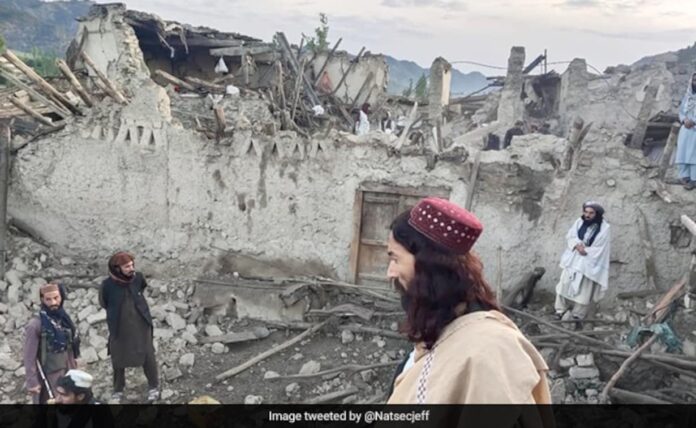An earthquake struck eastern Afghanistan early Wednesday, killing at least 300 people, authorities said.
Information remained scarce on the magnitude 6 temblor that struck Paktika province, but it comes as the international community largely has left Afghanistan after the Taliban takeover of the country last year amid the chaotic withdrawal of the U.S. military from the longest war in its history.
That likely will complicate any relief efforts for this country of 38 million people.
The state-run Bakhtar news agency reported the death toll and said rescuers were arriving by helicopter. The news agency’s director-general, Abdul Wahid Rayan, wrote on Twitter that 90 houses have been destroyed in Paktika and dozens of people are believed trapped under the rubble.
Footage from Paktika province near the Pakistan border showed victims being carried into helicopters to be airlifted from the area. Images widely circulating online from the province showed destroyed stone houses, with residents picking through clay bricks and other rubble.
Bakhtar posted footage of a resident receiving IV fluids from a plastic chair outside the rubble of his home and others sprawled on gurneys.
“A severe earthquake shook four districts of Paktika province, killing and injuring hundreds of our countrymen and destroying dozens of houses,” Bilal Karimi, a deputy spokesman for the Taliban government, separately wrote on Twitter. “We urge all aid agencies to send teams to the area immediately to prevent further catastrophe.”
In just one district of the neighboring Khost province, the earthquake killed at least 25 people and injured over 95 others, local officials said while warning the death toll would rise without urgent government help.
From Kabul, Prime Minister Mohammad Hassan Akhund convened an emergency meeting at the Presidential Palace to coordinate the relief effort for victims in Paktika and Khost.
READ ALSO: Senate alerts military on terrorists’ enclaves in Kwara, Niger
The U.N. resident coordinator in Afghanistan, Ramiz Alakbarov, expressed condolences to the victims and said that the world body’s agencies were responding to the earthquake’s devastation.
“Response is on it’s way,” he wrote on Twitter.
Neighboring Pakistan’s Meteorological Department put the earthquake at a magnitude 6.1. Tremors were felt in the Pakistani capital, Islamabad, and elsewhere in the eastern Punjab province. Some remote areas of Pakistan saw reports of damage to homes near the Afghan border, but it wasn’t immediately clear if that was due to rain or the earthquake, said Taimoor Khan, a disaster management spokesperson in the area.
Pakistan’s Prime Minister Shahbaz Sharif in a statement offered his condolences over the earthquake, saying his nation will provide help to the Afghan people.
The European seismological agency, EMSC, said the earthquake’s tremors were felt over 500 kilometers (310 miles) by 119 million people across Afghanistan, Pakistan and India.
Mountainous Afghanistan and the larger region of South Asia along the Hindu Kush mountains, where the Indian tectonic plate collides with the Eurasian plate to the north, has long been vulnerable to devastating earthquakes. Poor construction for homes, hospitals and other buildings put them at risk of collapse in earthquakes, while landslides remain common across the mountains of Afghanistan.
In 2015, a major earthquake that struck the country’s northeast killed over 200 people in Afghanistan and neighboring northern Pakistan. A similar 6.1 earthquake in 2002 killed about 1,000 people in northern Afghanistan. And in 1998, a 6.1-magnitude earthquake and subsequent tremors in Afghanistan’s remote northeast killed at least 4,500 people.
AP













